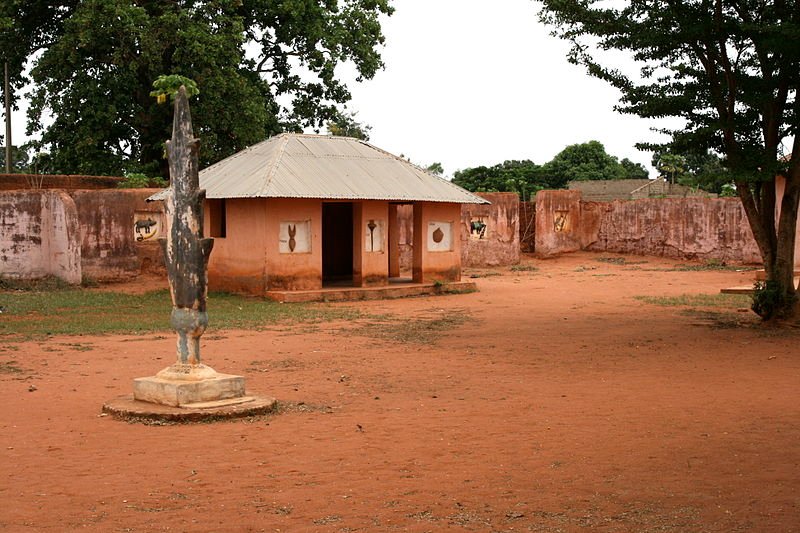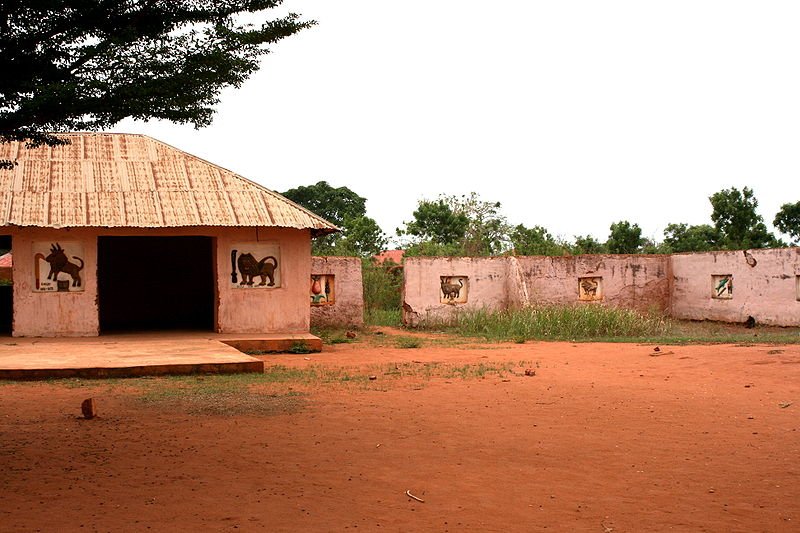 The Royal Palaces of Abomey in Benin, in 2008
The Royal Palaces of Abomey in Benin, in 2008Source: https://commons.wikimedia.org/wiki/File:Abomey-K%C3%B6nigspalast2.jpg
Author: Dominik Schwarz

The Royal Palaces of Abomey are a unique remnant from a long-vanished kingdom of the Fon people that flourished in Abomey, Benin, between 1625 and 1900. During that span of time, twelve different kings of the Kingdom of Dahomey (Danxomè) had their royal palaces built within the same mud wall compound - with the exception of King Akaba, who had his own enclosure. They are the most famous and significant ancient site in West Africa, and were inscribed as a World Heritage Site during the 9th session of the World Heritage Committee meeting in Headquarters in Paris, France, between 2 to 6 December, 1985. The Committee stressed the importance of careful restoration to preserve the authenticity of the site.
Abomey is the ancient capital of Dahomey kingdom. It was surrounded by a mud wall that is six miles around. The wall was also given added protection by a feet-feet deep ditch, as well as dense growth of prickly acacia. There were six gates into the city. Inside the city wall were the village houses, the fields, market place, barracks and royal palaces. The city was destroyed in 1892 when the last independent king of Dahomey, King Behanzin, set fire to Abomey before fleeing north. The French then took over the city and built a railway line to link it to the coast.
 Another view within the compound of the Royal Palaces of Abomey, Benin, in 2008
Another view within the compound of the Royal Palaces of Abomey, Benin, in 2008Source: https://commons.wikimedia.org/wiki/File:Abomey-K%C3%B6nigspalast3.jpg
Author: Dominik Schwarz

In 1993, during the restoration work carried out on the royal palaces of Abomey, 50 of the original 56 bas-reliefs that used to cover the walls of King Glèlè were located and put back on the restored walls. The bas-reliefs show the history of the Fon people.
Today, although Abomey has lost its significance to Porto-Novo, the present capital, it remains an important tourist destination as well as the centre of handicrafts.
What to See in Royal Palaces of Abomey
The buildings within the royal palaces are now part of the Historical Museum of Abomey. They were built of earth, palm and bamboo, with straw and sheet-metal roofing. The bas-reliefs serve both as a wall decoration as well as a codified means of communication. The bas-reliefs were made from earth taken from the ant-hills mixed with palm oil, and coloured with vegetable dyes as well as mineral pigments.Visitors to the Royal Palaces of Abomey should explore the different courtyards, with their buildings and temples to appreciate the ancient architecture.
World Heritage Site Inscription Details
Location: N 7 10 60 E 1 58 60Inscription Year: 1985
Type of Site: Cultural
Inscription Criteria: III, IV
 Latest updates on Penang Travel Tips
Latest updates on Penang Travel Tips

Copyright © 2003-2025 Timothy Tye. All Rights Reserved.

 Go Back
Go Back